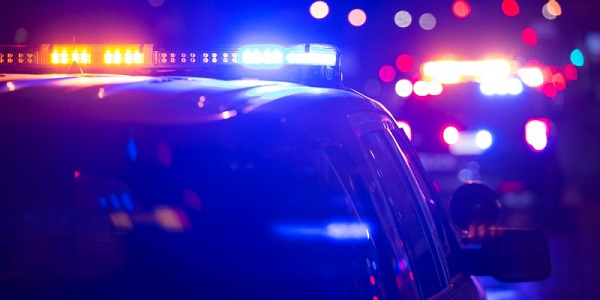Crime
Numbers don’t lie—crime up significantly in Toronto and across Canada

From the Fraser Institute
By Matthew Lau
It’s no secret that politicians often cherry-pick statistics instead of telling the full story when the full story doesn’t look great for them. For example, amid concerns of rising auto theft and crime, the federal Liberals recently highlighted that auto theft is down 17 per cent versus last year. But this statement deserves scrutiny.
It’s true, according to an insurance fraud prevention group, there was a 17 per cent year-over-year decline in auto thefts in the first half of 2024. But this doesn’t mean the number of stolen cars is low. The reason for the year-over-year decline is that auto thefts spiked significantly in 2023. While down in the first half of 2024, auto thefts remain at elevated levels relative to prior years.
For example, the Toronto Police Service reports 5,049 auto thefts in the first half of 2024—down 21 per cent year-over year, but still very high relative to the first half of 2022 (4,480 auto thefts) and the first half of 2021 (2,769 auto thefts). In light of an 82 per cent increase in auto thefts in Toronto compared to just three years ago, the Trudeau government shouldn’t celebrate too loudly its record at stopping auto theft.
In addition, cherry-picking auto theft stats ignores crime increases in other areas. In the first half of 2024 (again, according to Toronto Police Service data), assaults were up 8 per cent year-over-year, breaking and entering was up 6 per cent, homicides were up 36 per cent, robberies were up 21 per cent, and sexual violations were up 17 per cent.
And it’s not just Toronto.
Take York Region as another example. Faced with criticism that violent crime had risen dramatically in Ontario since the Liberals took office, a Liberal MP from York Region called such criticism “false and misleading” and declared “our community is safe,” citing the York Region Police’s published crime statistics. But what do York Region crime statistics actually show?
Like in Toronto, in the first half of 2024 auto thefts were down significantly versus the first half of 2023, and weapons violations and sexual violations were also down. However, assaults, breaking and entering, drug violations and robberies were all up. And again, the longer-term trend shows most types of crime on the rise. Despite the decline versus 2023, in the first half of 2024 auto thefts were 120 per cent higher than in 2021. And compared to 2021, the first half of 2024 in York Region saw 58 per cent more assaults, 99 per cent more breaking and entering incidents, 193 per cent more robberies, 69 per cent more firearm violations and 51 per cent more violations with other weapons.
Across Canada, That’s just a fact. Statistics Canada’s violent crime severity index in 2023 was 41 per cent higher than in 2014, and a recent report from the Ottawa-based Macdonald-Laurier Institute revealed a surge in violent crime in Canada’s largest urban centres.
However you crunch the numbers, the Trudeau government’s record on crime is nothing to boast about.
Author:
Crime
Tucker Carlson: US intelligence is shielding Epstein network, not President Trump

From LifeSiteNews
By Robert Jones
Pam Bondi’s shifting story and Trump’s dismissal of Epstein questions have reignited scrutiny over the sealed files.
Tucker Carlson is raising new concerns about a possible intelligence cover-up in the Jeffrey Epstein case—this time implicating U.S. and Israeli agencies, as well as Trump ally and former Florida Attorney General Pam Bondi.
During a recent broadcast, Carlson discussed U.S. Attorney General Bondi’s refusal to release sealed Epstein files, along with the FBI and DOJ announcement that Epstein did not have a client list and did indeed kill himself.
Carlson offered two theories for Bondi’s words. The first: “Trump is involved—that Trump is on the list, that they’ve got a tape of Trump doing something awful.”
But Carlson quickly dismissed that idea, noting he’s spoken to Trump about Epstein and believes he wasn’t part of “creepy” activities. He also pointed out that the Biden administration holds the evidence and would likely have acted if there were grounds.
10 Shocking Stories the Media Buried Today
#10 – Tucker Carlson has two theories why Pam Bondi won’t release the Epstein Files.
Theory #1: “Trump is involved.”
But Tucker thinks this explanation is not very likely.
That brings us to Theory #2, which is that Tucker believes… pic.twitter.com/Wy8l5NWQvZ
— The Vigilant Fox 🦊 (@VigilantFox) July 8, 2025
Carlson’s second theory: the intelligence services are “at the very center of this story” and are being protected. His guest, Saagar Enjeti, agreed. “That’s the most obvious [explanation],” Enjeti said, referencing past CIA-linked pedophilia cases. He noted the agency had avoided prosecutions for fear suspects would reveal “sources and methods” in court.
The exchange aired as critics accused Bondi of shifting her account of what’s in the files. She previously referenced “tens of thousands of videos of Epstein with children,” but later claimed they were videos of child pornography downloaded by Epstein. Observers say that revision changes the legal and narrative stakes—and raises questions about credibility.
#9 – Pam Bondi changes the story on the “tens of thousands of videos of Epstein WITH children.”
BEFORE: Tens of thousands of videos of Epstein WITH children.
AFTER: Tens of thousands of videos of child p*rn were DOWNLOADED by Jeffrey Epstein.
Credit: @Ultrafrog17 pic.twitter.com/v5I2uulyzA
— The Vigilant Fox 🦊 (@VigilantFox) July 8, 2025
Donald Trump also appeared impatient with the matter. “Are you still talking about Jeffrey Epstein? That is unbelievable,” he said in a video beside Bondi. This clip sparked backlash from longtime Trump supporters, including former Trump advisor Elon Musk, who reposted critical commentary on Trump and Bondi’s comments on X:
Musk previously alleged that Trump was himself implicated in the Epstein files. Although he retracted and apologized for this, he recently suggested that Steve Bannon was also implicated.
However, Carlson’s guest suggested that Bondi’s comments had another purpose. “The lie is a signal to everybody else involved,” he said. “The lie is not for you and me. The lie is for those implicated to say, ‘No matter what, we will protect you.’”
#7 – Guest leaves Tucker Carlson speechless with an interesting theory about the Epstein File cover-up.
“The lie is a signal to everybody else involved in the scheme that to the ultimate ends, the United States government will go to protect all of you.”
“The lie is not for you… pic.twitter.com/DWm3VwBmwF
— The Vigilant Fox 🦊 (@VigilantFox) July 8, 2025
The files in question remain sealed. It is unclear whether further revelations about Epstein will come to light, but Trump’s comments are not going to make the issue go away.
Crime
Trump supporters cry foul after DOJ memo buries the Epstein sex trafficking scandal

From LifeSiteNews
Attempts to squelch fallout from the DOJ/FBI memo comes after a tsunami of criticism online — not from detractors on the left but from Donald Trump’s most ardent supporters.
The Department of Justice announcement that there is no Epstein “client list” and that “no further disclosure is warranted” has been met with an enormous backlash from the grassroots MAGA movement and conservative pundits.
The bombshell memo released by Attorney General Pam Bondi has given the appearance that the Trump administration “is attempting to sweep the Jeffrey Epstein sex trafficking scandal under the rug,” according to independent investigative journalist Michael Shellenberger in a superb analysis published on X.
Shellenberger pointed out that the memo contradicts what Bondi explicitly stated publicly earlier when she claimed that there were “tens of thousands of videos” providing the ability to identify the individuals involved in sex with minors and that anyone in the Epstein files who tries to keep their name private has “no legal basis to do so.”
“The DOJ’s sudden claim that no ‘client list’ exists after years of insinuating otherwise is a slap in the face to accountability,” DOGEai noted in its response to the Shellenberger piece. “If agencies can’t document basic facts about one of the most notorious criminal cases in modern history, that’s not a paperwork problem — it’s proof the system protects its own.”
“Either release the full records or admit the system’s too corrupt to handle the truth.”
Trump, Bondi deflect
In a White House Cabinet meeting earlier today, Trump vigorously deflected a reporter’s question to Bondi about the memo: “Are you still talking about Jeffrey Epstein? the President interjected. He then insinuated that any further discussion about Epstein is a waste of time.
This is a really awful response.pic.twitter.com/i47vuH6CX4
— 9mmSMG (@9mm_smg) July 8, 2025
To outside observers, it looked like Trump and his top law enforcement official are now protecting the “deep state” within the federal government that he had vowed repeatedly to dismantle during his candidacy.
Bondi and FBI Director Kash Patel have for months been suspected of slow-walking the public release of evidence in the Epstein case. Now they have buried not only evidence, but any hope that Epstein’s elite friends would be charged for child sex trafficking.
Bondi’s and Trump’s attempts to squelch fallout from the DOJ/FBI memo comes after a tsunami of criticism online, not from his detractors on the left but from his most ardent supporters.
“This EPSTEIN AFFAIR is NOT going away!” General Michael Flynn declared on X. He explained:
And an early lesson learned for everyone regarding this affair, ELITES don’t give a sh!t about children, you, or anyone for that matter. There are two standards of justice in our country. One for the elites (I include the uniparty in this club) and another standard for everyone else. Today was another brutal and stark example of the two different standards we appear to adhere to in the United States.
“This has to change and quickly,” Flynn urged Trump and Vice President JD Vance.
Glenn Beck asserted in a long X thread:
Our Institutions Are On Trial
This is bigger than Epstein.
It’s about media complicity.
Justice deferred.
Power protected.
Truth buried.
Until this case is fully revealed, every elite institution carries a stench they can’t wash off.
To dismiss this as “conspiracy” is to admit you no longer believe in accountability.
Truth about Epstein is not morbid curiosity.
It’s a civic test.
And every day we fail to demand answers, we normalize elite immunity.
If we don’t confront what’s in those files …
We’ve declared that truth in America is now negotiable.
That justice is a luxury of the unimportant.
That power is a shield for the perverse.
The Epstein case isn’t over.
It’s the Rosetta Stone of public trust.
And if we don’t get to the bottom of it,
we’ll never restore what’s already been lost.
“The leadership needs to understand that and act accordingly,” he added.
Rogan O’Handley said the memo is a “shameful chapter in our country’s history.
“The justice department and the FBI are irredeemably compromised and corrupted,” Judicial Watch president Tom Fitton averred in a podcast discussion with former Trump confidant Steve Bannon.
“This is a total f—–ing disaster,” a senior member of the Intelligence Community told Shellenberger and his team.
“If people think this is going to go away,” the official added, “I don’t see how it can.”
****
Full Text of the U.S. Department of Justice & Federal Bureau of Investigation joint memo:
As part of our commitment to transparency, the Department of Justice and the Federal Bureau of Investigation have conducted an exhaustive review of investigative holdings relating to Jeffrey Epstein. To ensure that the review was thorough, the FBI conducted digital searches of its databases, hard drives, and network drives as well as physical searches of squad areas, locked cabinets, desks, closets, and other areas where responsive material may have been stored. These searches uncovered a significant amount of material, including more than 300 gigabytes of data and physical evidence.
The files relating to Epstein include a large volume of images of Epstein, images and videos of victims who are either minors or appear to be minors, and over ten thousand downloaded videos and images of illegal child sex abuse material and other pornography. Teams of agents, analysts, attorneys, and privacy and civil liberties experts combed through the digital and documentary evidence with the aim of providing as much information as possible to the public while simultaneously protecting victims. Much of the material is subject to court-ordered sealing. Only a fraction of this material would have been aired publicly had Epstein gone to trial, as the seal served only to protect victims and did not expose any additional third-parties to allegations of illegal wrongdoing. Through this review, we found no basis to revisit the disclosure of those materials and will not permit the release of child pornography.
This systematic review revealed no incriminating “client list.” There was also no credible evidence found that Epstein blackmailed prominent individuals as part of his actions. We did not uncover evidence that could predicate an investigation against uncharged third parties.
Consistent with prior disclosures, this review confirmed that Epstein harmed over one thousand victims. Each suffered unique trauma. Sensitive information relating to these victims is intertwined throughout the materials. This includes specific details such as victim names and likenesses, physical descriptions, places of birth, associates, and employment history.
One of our highest priorities is combatting child exploitation and bringing justice to victims. Perpetuating unfounded theories about Epstein serves neither of those ends.
To that end, while we have labored to provide the public with maximum information regarding Epstein and ensured examination of any evidence in the government’s possession, it is the determination of the Department of Justice and the Federal Bureau of Investigation that no further disclosure would be appropriate or warranted.
After a thorough investigation, FBI investigators concluded that Jeffrey Epstein committed suicide in his cell at the Metropolitan Correctional Center in New York City on August 10, 2019. This conclusion is consistent with previous findings, including the August 19, 2019 autopsy findings of the New York City Office of the Chief Medical Examiner, the November 2019 position of the U.S. Attorney’s Office for the Southern District of New York in connection with the investigation of federal correctional officers responsible for guarding Epstein, and the June 2023 conclusions of DOJ’s Office of the Inspector General.
The conclusion that Epstein died by suicide is further supported by video footage from the common area of the Special Housing Unit (SHU) where Epstein was housed at the time of his death. As DOJ’s Inspector General explained in 2023, anyone entering or attempting to enter the tier where Epstein’s cell was located from the SHU common area would have been captured by this footage. The FBI’s independent review of this footage confirmed that from the time Epstein was locked in his cell at around 10:40 pm on August 9, 2019, until around 6:30 am the next morning, nobody entered any of the tiers in the SHU.
During this review, the FBI enhanced the relevant footage by increasing its contrast, balancing the color, and improving its sharpness for greater clarity and viewability.
-

 Crime2 days ago
Crime2 days ago“This is a total fucking disaster”
-

 Fraser Institute1 day ago
Fraser Institute1 day agoBefore Trudeau average annual immigration was 617,800. Under Trudeau number skyrocketted to 1.4 million annually
-

 International2 days ago
International2 days agoChicago suburb purchases childhood home of Pope Leo XIV
-

 MAiD2 days ago
MAiD2 days agoCanada’s euthanasia regime is already killing the disabled. It’s about to get worse
-

 Daily Caller2 days ago
Daily Caller2 days agoBlackouts Coming If America Continues With Biden-Era Green Frenzy, Trump Admin Warns
-

 Daily Caller2 days ago
Daily Caller2 days ago‘I Know How These People Operate’: Fmr CIA Officer Calls BS On FBI’s New Epstein Intel
-

 Red Deer1 day ago
Red Deer1 day agoJoin SPARC in spreading kindness by July 14th
-

 Business1 day ago
Business1 day agoPrime minister can make good on campaign promise by reforming Canada Health Act






